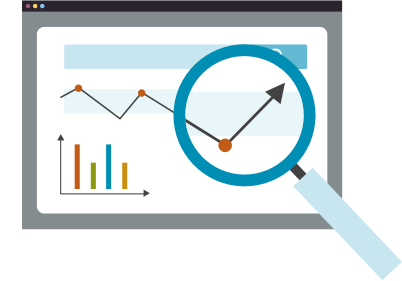Value and Fee Benchmarking is the industry’s most utilized and value focused benchmarking service. It transitions the conversation away from “What am I paying?” to “Is what I am paying reasonable for the services, value and success that my plan and participants are achieving?”.
This is the more important question and the reason why the DOL used the word “reasonableness” in the 408(b) regulation 49 times.
Book a DemoThe features that the Value and Fee Benchmark with FEEPOINT® calculation Presentation Style Report offer to assist your plan in determining reasonableness and highlighting value are:
Feature
Same process, same method, different output
.jpg)
The Value and Fee Benchmark with FEEPOINT® calculation Presentation Style Report follows the same process and method as FDI’s industry leading Value and Fee Benchmark report with one important difference – it is presentation ready!
It is delivered as two PDFs. The first PDF is for your presentation to the sponsor or committee and contains 2 pages per service providers.
- Executive Summary format
- Excellent for client and prospect plan reviews
- Average of 10 pages
The What you Get and What you Pay report sections summarize the following 5 components of benchmarking:
- Custom Benchmark Group
- Quality
- Service
- Value
- Fees with Extra Credit.
The second PDF contains all of the details and calculations.
.jpg)
Feature
Complete Report or Individual Chapters
.jpg)
You can order a report that covers all of the plan’s Service Providers. Or select the individual chapters that suit your current need. Individual chapters include Fund Managers, Recordkeeper, Third Party Administrator, and/or Advisor/Consultant.

Feature
Use the Right Data

100% of the data in the Value and Fee Benchmark with FEEPOINT® calculation Presentation Style report comes directly from “the source” – the Service Providers that know the plan best. This ensures that all of the data is current, accurate and consistent with 408(b) disclosures.
Feature
Utilize a Fair and Repeatable Process
FDI uses the same 5 step process to assess each Service Provider as follows:
- FDI has a proprietary database of over 300,000 plans.
- All data in that database has been scrubbed and normalized to make sure all comparisons are “valid.”
The Benchmark Groups for each service provider are built around 3 key factors:
- Economically Logical – each benchmark group is built around the specific factors that drive their pricing: (i.e. plan assets, participant count and average account balance for Recordkeepers and Third Party Administrators).
- Statistically Valid – remove the outliers from the group, ensure that no single service provider dominates the group and that there are a statistically meaningful number of data points
- Diversification – the benchmark group for each Service Provider will represent at least 25 plans, a minimum of 10 different Recordkeepers, at least 3 business models and will be representative of market segment behavior.
Why is value the first consideration in the report?
Two reasons:
- First, the value side of the equation can be mathematically shown to be MORE IMPORTANT than the fee analysis. As an example, helping a participant save 2% or 3% more in the plan is much more powerful than cutting fees by 20%.
- Second, this is consistent with prior rulings from the DOL that the quality of a provider can be considered when evaluating fees. For this reason, FDI provides a framework that will help you analyze the quality of the Service Provider being analyzed.
The scope of services provided has a clear impact on plan costs. For example, when we assess advisor services, we look at four areas that drive cost and which contain approximately 30 different services to provide you with an idea of whether the service you are receiving is more or less than the typical plan in the benchmark group. If your plan is receiving more services, a greater volume of services or services that have a higher degree of difficulty it might be reasonable to expect a higher cost structure.
For plan sponsors, we look at the three areas below that support or help the plan sponsor in performing their job.
- Service Quality: Accuracy and Timeliness
- Support Services
- Plan Provisions Assistance
For plan participants, we look at seven important leading behavioral indicators that predict retirement outcomes. We translate that information into a simple bar chart that helps the fiduciaries understand how small changes in these metrics can make a big difference to their participants.
- Auto Enrollment
- Auto Escalation
- Employer Match
- Employer Other Contributions
- Auto Diversified Strategy as a QDIA
- Offer Managed Accounts for all Employees
- Annually Re-Enroll Employees into QDIA
Lastly, FDi examines all fees being paid to the Service Providers. We compare these fees to the benchmark group and to a proprietary market benchmark called FEEPOINT®, which approximates the market value of the unique services provided to the plan.

Feature
Consider the Quality of the Service Provider

The First step in evaluating – “What You Are Getting”. In that regard, the DOL has specifically noted in prior rulings that the quality of a Service Provider can be considered when determining fee reasonableness. Fiduciary Decisions examined how leading Service Providers describe “quality” and we evaluated those quantitative and qualitative factors and categorized them into the following three areas: The Firm, Services/Process and People/Technology/Resources. While Fiduciary Decisions does not currently benchmark the factors listed in this section, we have provided a framework for discussing these items as we believe they are very important.
Feature
Analyze Scope of Services and their impact on Plan Costs
The Second step in evaluating – “What You Are Getting”. The Scope of Services provided directly impacts the cost of servicing a plan. And just as the plan sponsor’s own business links their cost of services or cost of goods to their price, this section of the report helps do the same thing for the service provider.
- For Advisor/Consultants – Fiduciary Decisions surveyed hundreds of expert Advisors/Consultants to develop a list of over 30 services that also have varying degrees of difficulty across four different service categories. We then developed a mathematical model that places more weight on more difficult services and higher degrees of difficulty.
- For Recordkeepers and TPA’s – Fiduciary Decisions has worked with dozens of the industry’s largest and most prestigious recordkeepers to examine those services that have the greatest impact on servicing a plan across four different service categories. We then developed a mathematical model using a “core and more” approach based on the amount of work associated with each service. Thus, the model places less weight on differences in “core services” such as participant investment transfers and greater weight on differences in “more services” such as whether company stock is an investment option for the plan.

Feature
Assess Value Delivered to the Plan Sponsor and their Participants

The Third step in evaluating – “What You Are Getting” is to examine the value being delivered. For example, as it relates to Advisor/Consultants and how they support Plan Sponsors, Fiduciary Decisions calculates a PlanCheck Score using a proprietary model that associates certain services with current legal issues, DOL Audit concerns and relevant best practices. For the plan’s participants, we compare the Participant Success Measures for your plan versus your industry. We then project how these metrics impact the projected account balances of all participants, assuming they are all “average.”
Features
Examine Fees including Extra Credit
FDI believes that you should examine fees only AFTER you have covered the Quality of the Service Provider, the Scope of Services for the plan and the Value Delivered to plan sponsors and their participants.
With respect to these fees, you should ensure that all fees are being represented and compare them to the benchmark group. In addition, we calculate a proprietary fee called FEEPOINT® which represents the base fee that your Service Provider is charging PLUS the value of extra services or work they are providing.